On the shore of the Kolomensky Gulf, 65 km from Simferopol, one of the most ancient cities - Evpatoria - is spread out. In 2003, he celebrated his 2500th birthday. Geographically, this delightful city can be divided into three parts: the resort area, where a large number of Yevpatoria health resorts are located, the old city with its narrow winding streets and the new city, where high-rise buildings are lined up in rows. Vacationers say: in Yevpatoriya you can lie down on the beach, go diving or snorkeling. The fact is that coastal waters hide countless treasures: flooded cities (more precisely, what remains of them), sunken ships. And you can go on a trip to the sights of Yevpatoriya. We’ll talk about them today.
Museum of Local Lore
The history of the museum of local lore begins in 1921. It was then that the first expositions were placed in a merchant's mansion, which is rightfully considered one of the most unusual buildings in the city. By the beginning of World War II, the Evpatoria Museum of Local Lore consisted of 5 large departments:
- atheistic;
- ethnographic;
- archaeological;
- resort;
- industrial.
A large number of exhibits were lost during the occupation. But this did not prevent the museum from opening its doors only 15 days after the liberation of the city. Since then, the collections have been very actively replenished, to date, the museum’s expositions number 100 thousand exhibits. Among them are various historical documents, Scythian monuments. A huge exposition dedicated to the local flora and fauna will delight visitors.
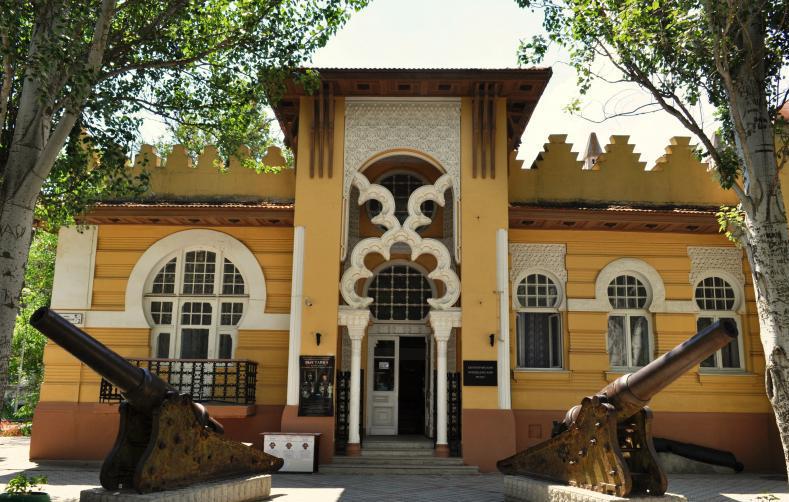
It is worth mentioning that the immersion in the history of Yevpatoria begins before visiting the museum: near the building there is a glass pyramid, inside which an exhibition of archaeological finds is arranged. And before the entrance to the Evpatoria Museum of Local Lore there are two guns that have survived from the 19th century. There are exhibits telling about urban life. These are jewelry, dishes and other household items, products of arts and crafts. But the staff of the museum of local lore call the historical collection a real pride. It includes several dioramas, the most impressive of which is a diorama dedicated to the landing of Yevpatoria in 1942. A 15-minute walk from the Museum of Local Lore is the Museum of the History of the Crimean War, which is part of the military history exposition.
Helpful information
This attraction of Yevpatoriya is located at 11. Duvanovskaya Street. And in the building No. 61 on Revolution Street is the Museum of the History of the Crimean War. According to information for the summer of 2017, an adult ticket will cost 150 rubles, a child ticket will cost 90. To visit the Museum of the History of the Crimean War, an adult will need 120 rubles, a child will need 60 rubles. Expositions are open from 10:00 to 16:30. Both museums are open daily except Wednesday.
Wine house
Speaking about the interesting places of the city, one cannot fail to mention another attraction of Yevpatoriya - the Wine Museum. It performs several functions at once: in addition to the museum, there is a tasting room and a souvenir shop. The museum is located near the main square, on Buslaev Brothers Street, 30. In the tasting room, museum visitors can get acquainted with the best wines of the peninsula, learn about each producer in detail and study the history of the origin of wine and its appearance in the Crimea. A separate part of the excursion program is an acquaintance with the intricacies of the culture of wine drinking. It is worth noting that the wine house presents the most exquisite exhibits, distinguished by a bright taste and an unforgettable aftertaste, collected from all over the Crimea - wine masterpieces of the Solar Valley, Inkerman, New World, Koktebel, Magarach and Massandra. All wines were purchased from manufacturers, and therefore there is no doubt in authenticity.
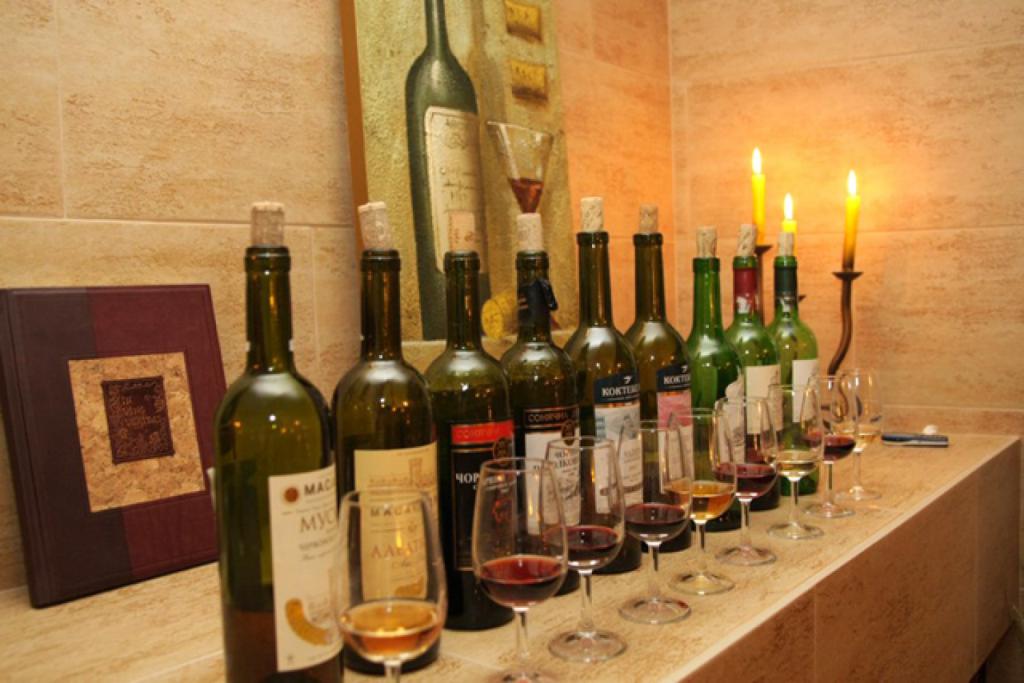
After the tasting, you can purchase the most liked wines or souvenirs that are associated with winemaking. And if you plan to continue exploring the sights of Yevpatoriya and decide to stay in the city for a few days, you can order delicious aged collection wines that will be a great gift or replenish your winery.
By the way, more than 8 decades has been giving the world delicious Crimean wines. The Evpatoria Classic Wine Factory. It was founded in 1928: then, on the site of the wine cellars of the merchant Yusuf Kokush, the first workshop of the future winery was built.
Karaite kenassas
One of the most picturesque streets of this ancient city is Karaimskaya Street. It is here that a unique attraction is located - the so-called Karaite kenassas. In Evpatoria, this temple complex appeared in the 19th century - on the site where the dilapidated kenassa of the 16th century used to be located. By the way, Samuil Bobovich acted as the chief designer. He graduated from only three classes of the parish school, but this did not stop him from creating a magnificent architectural ensemble.
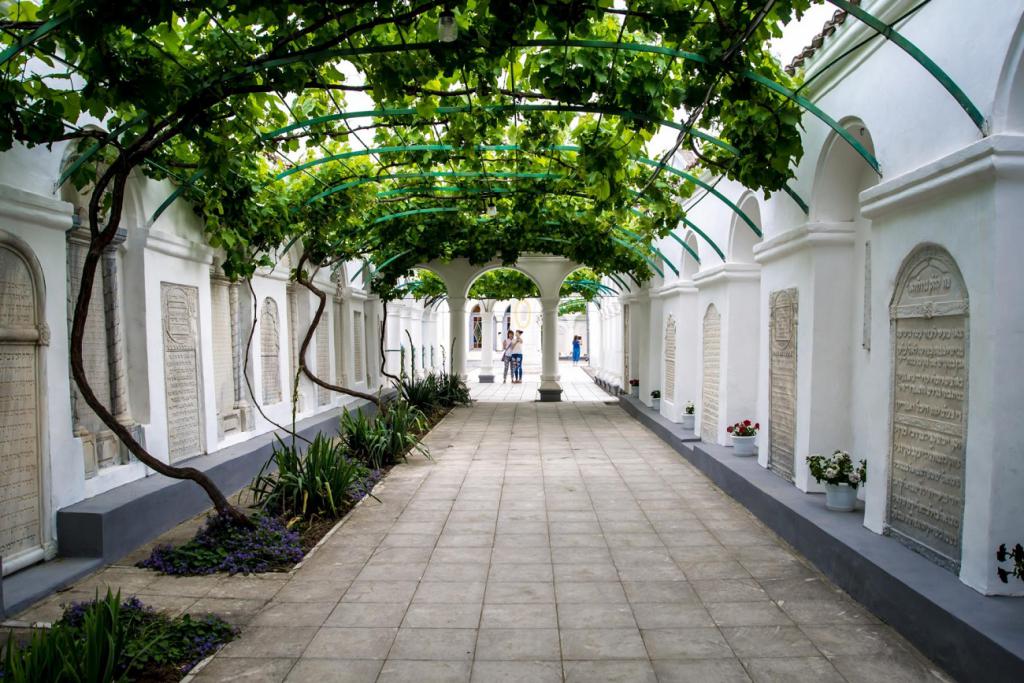
Just imagine the narrow streets of the old part of the city, paved with cobblestones, small houses made of shell rock, greenery ... And suddenly you will see an amazing portal with columns, chic stucco molding and wrought-iron bars. A long alley of vines hides behind the gates, bright sunny flares tremble on the warm marble slabs, and only the birds singing disturbs the peace of the house of worship. These are exactly the first impressions of those people who find themselves on an incredibly hot and sunny day in front of the Karaite kenasses in Yevpatoriya - at the same time a temple, a museum and a sacred place of one of the most mysterious peoples of our country.
A bit of history
Who are the Karaites? This is a Turkic tribe that appeared in the Crimea in the eighth century AD. Researchers say that perhaps the Karaites were subjects of the Khazar Khaganate and professed Judaism. It is worth noting that this people has remained committed to the basic tenets of religion, but only the Torah is a holy book for the Karaites. But the Gospel, the Koran, the Talmud - in their opinion, are only unnecessary additions that can interfere with a true righteous life.
After the conquest of Crimea by Catherine the Great, the creed of the Karaites was recognized as an independent religion, and therefore this people was exempted from double tax and received permission to own land.
Nowadays
Everyone who has read the Bible knows that the dimensions of the courtyard of the temple tabernacle should be 100 to 50 cubits. The sizes of kenasses clearly correspond to these proportions: 60 by 30 meters. Immediately behind the gate there is a fountain, which is necessary for washing hands. From the fountain begins the Vineyard, the walls of which are lined with marble, and the role of the roof is played by intertwined vines. Even the hottest day is very cool here. Memorial slabs are installed along the courtyard walls, the inscriptions on which, made in Hebrew, tell the story of the Karaites.
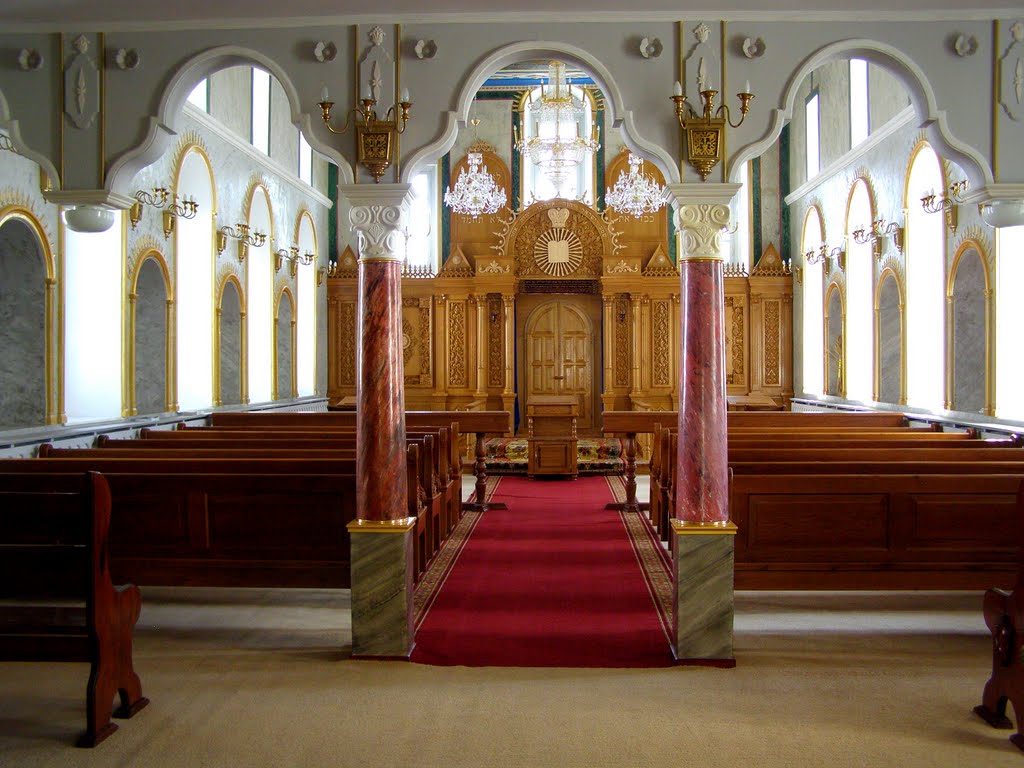
The grape gallery leads visitors to the marble courtyard, in the center of which stands a monument erected in honor of the visit to Kenass by Alexander the First. In front of the entrance to the Great Kenasse there is a cozy Courtyard for waiting for prayers, where believers gather before the rites. The ritual start time is usually determined by the sundial set here. Lesser Kenassa is an exact copy of the temple located in Chufut-kala, from where, in fact, the Karaites also moved to Yevpatoria. The magnificent altar used to adorn the temple in Galich, now destroyed. Over the course of 35 years, this altar has been secretly preserved in order to take its place in 1994.
In their reviews of this attraction of Yevpatoriya, tourists say: this is not just a cathedral, but an ethnographic museum, which even includes a restaurant. It is important to understand that Karaites are a hospitable and cheerful people, besides they sacredly honor the covenants of their ancestors, and therefore, going here, one should not insult very religious masters with inappropriate behavior or shouting and abuse.
Juma Jami Mosque
Thinking about what to see in Yevpatoriya? We advise you to pay attention to the Juma-Jami mosque, which is the current religious center and at the same time one of the most interesting historical and architectural monuments of Muslim culture in the territory of Crimea. Guests and residents of the peninsula note: this mosque is the largest and most beautiful in the Crimea. In addition, Juma Jami in Yevpatoriya is the only multi-domed mosque in Europe!
Often you can hear comparisons of this mosque with the stunning Hagia Sophia, located in Istanbul. This shrine is made even more unique by its centuries-old history. Historians claim that this temple was erected in 1552, the author is Sinan, a talented Ottoman architect, astronomer, mathematician and engineer. Initially, the mosque was used not only for worship of Allah, but also for various events. For example, there was a ceremony of initiation into the Crimean khans. The special act, which was signed by the new khan, remained in the mosque, and the ruler himself went to his capital - Bakhchisaray.
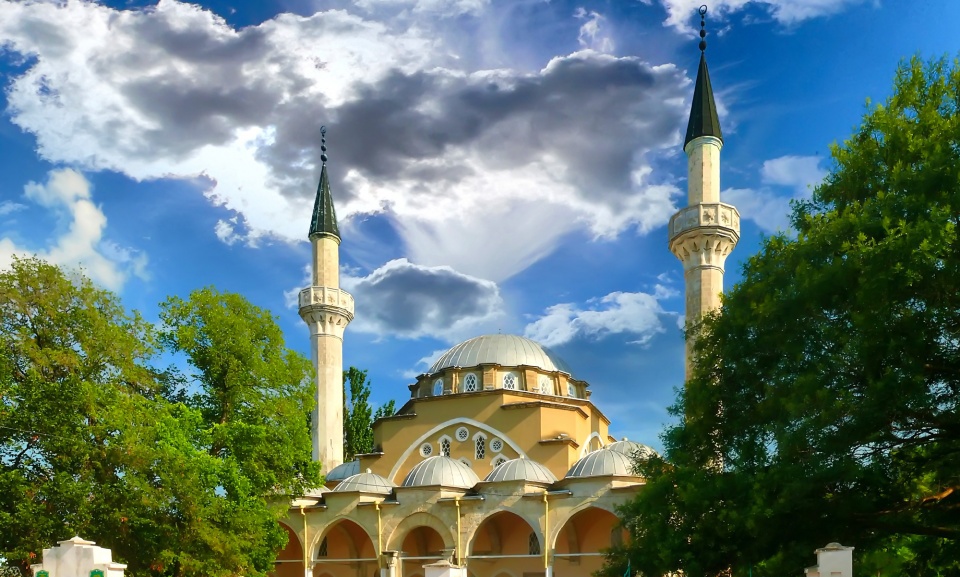
There is information that in May 1916 the Russian emperor Nikolai II visited the mosque. He entered through the eastern gate, which since then has never been opened. In Soviet times, Juma-Jami was closed, its place was taken by the department of local history museum. The Muslim community, this monastery was returned only in the nineties of the last century. Miraculously, historians call the fact that the mosque was dilapidated, but escaped destruction. Large-scale restoration was carried out in 2002. After it, the architectural monument regained its original form and opened the doors for tourists. By the way, not only Muslims are allowed here - adherents of various faiths can visit excursions that tell about religion, culture, various rites and customs of Muslims. An interesting fact: historians say that it was here where the Quran of the 15th century was stored for many years.
Theater named after A.S. Pushkin
In the heart of the city is the Evpatoria Theater named after A.S. Pushkin. It was built over a hundred years ago - in 1910. The architects Adam Henry and Pavel Seferov worked on the project. It is designed in a modernized Greek style, from its terraces magnificent sea panoramas open. Until 1937, this theater was called urban. And on the day of the centenary of the death of the great Russian poet Alexander Pushkin, the theater was renamed in honor of the luminary of poetry.
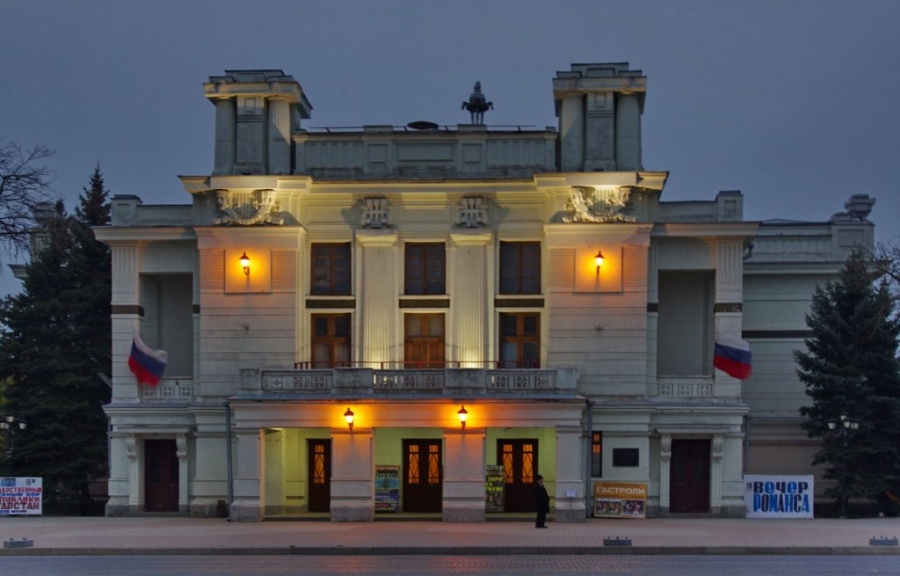
The first production, brought to life on the stage of the Yevpatoriya Theater, is the opera by Mikhail Glinka “Ivan Susanin”. Actors from the Mariinsky Theater, invited from St. Petersburg, played in it. Initially, the theater was equipped with 750 seats and comfortable lodges. But after the repair, the auditorium was able to expand to 900 seats. Unfortunately, the Evpatoria Theater does not have its own troupe. However, this does not hinder to watch concerts and performances of touring companies, say residents and visitors of the city.
Embankment of Valentina Tereshkova
It is difficult to imagine a place more mesmerizing than the Tereshkova embankment in Yevpatoriya. There are no iron fences, no cashiers, there is only the sea, trees and sky. By the way, there are no beaches here either, however, this does not stop vacationers from sunbathing on old stone steps broken by the sea or jumping into the water from an old pier and half-sunken boats. Locals say: the embankment is a symbolic transition between the old and new parts of the city. The formation of this place began in the second half of the XIX century, when the mayor was Samuil Moiseevich Pampulov - a man who paid great attention to beautification. In 1871, roads were put in order, sidewalks were laid, the first trees were planted.
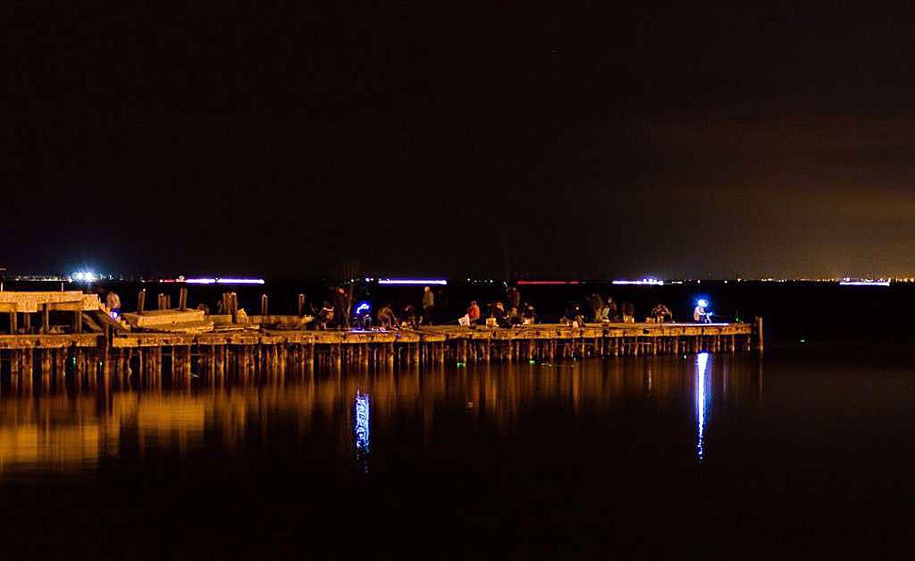
Now historians cannot establish reliably which of the buildings was the first to appear on Primorskaya Embankment. One thing is known: it was formed from the late nineties of the XIX century until 1914. Even then, apartments for vacationers were rented out in many residential buildings, and these apartments were the most expensive in all of Yevpatoriya. In 1912, the first three-story building in the neoclassical Art Nouveau style appeared on this embankment. You can see it even today - this is residential building No. 20. The southern facade of the building attracts attention with its protruding trapezoidal balcony, high semicircular arches that rest on thin columns. It is not surprising that this particular building attracted directors who made feature films, events in which took place in the last century. The embankment acquired its current name in the 1970s, in memory of the first woman-cosmonaut Valentina Tereshkova visiting Evpatoria in 1972.
Monument to Marines
Another interesting object that deserves attention is the monument to marines in Yevpatoriya. Just like the southern and western regions of Russia, two Crimean regions at once became territories of military feats and heroic sacrifice during the Second World War. Hero cities appeared in Tauris. However, in ordinary settlements, you can find objects with various military monuments. There are many such attractions in the city of Yevpatoriya. Among the most popular places of worship this object of high artistic value. Let's tell a little about the history of its appearance. On the night of January 5-6, 1942, a Soviet naval landing party landed in Yevpatoria, which was sent to attack the Nazis who had settled in the city. The crew was in for a tragic fate: an incredibly strong storm, lack of help, shells of German bombers led to the death of sailors. In the first hours of the dangerous attack, the captain of the 2nd rank Nikolai Buslaev, who led the soldiers, was also killed. The command was taken by political commissar Commissioner Andrei Boyko. We can say that the corner on the sixth kilometer of the Simferopol highway is a fraternal burial of the heroes of that landing.
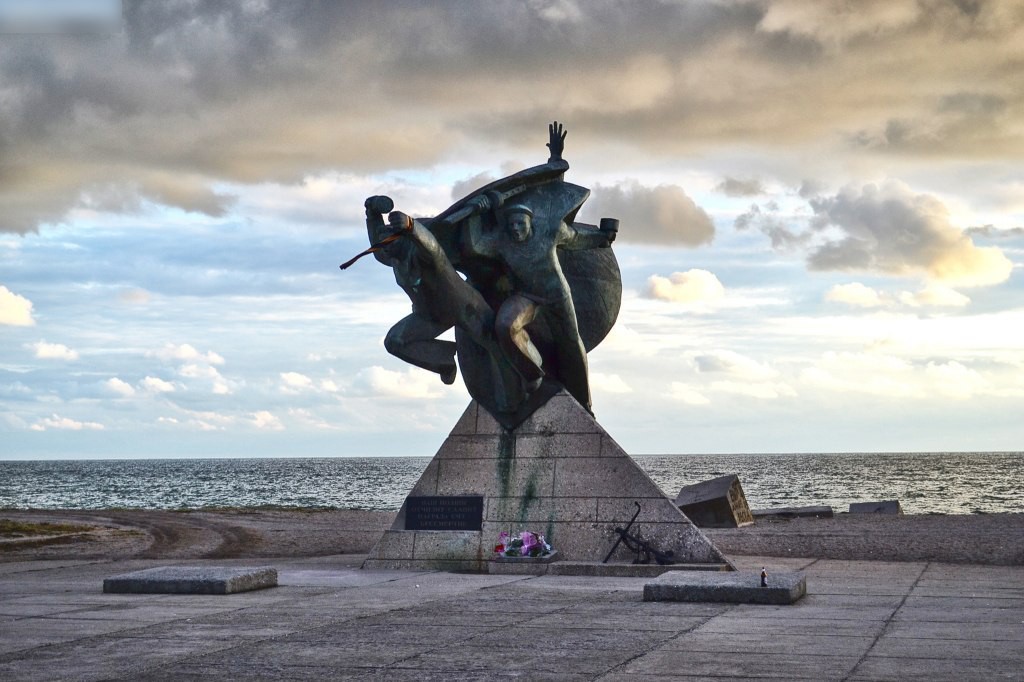
The thing is that the remains of hundreds of fighters were discovered by search engines both in the coastal part of the resort and in the park of Karaev. Of course, they were all brought here and buried in the same grave. At the same time, part of the victims could not be identified, because with them there were no flasks with inscriptions, party tickets or other documents. It is worth noting that the monument to the Yevpatoriya landing is on the list of the most famous places in the resort area "Yevpatoriya-Saki", and therefore, if you think what to see in Yevpatoriya, be sure to go to the 9-meter-high pyramid monument. On commemorative military dates or on parade days, residents of the city spare no effort and time to get here, to lay fresh flowers at the foundation.
Little Jerusalem
Choosing for yourself excursion routes in Yevpatoriya? Pay attention to the Little Jerusalem Walking Route. It was previously considered one of the most interesting in the city, and after the recent expansion of the program and the introduction of many additional elements into it, according to tourists, it became mandatory in the program of all city guests. The route begins at the Geslevsky gate. Here you will find a model of the ancient city of the Ottoman Empire, which could capture one day from his life. The next stage - Tekie dervishes, a very ancient monastery of wandering monks, the synagogue Eghie-Kapay. In addition, as part of the route, you can visit the Armenian Church of St. Nicholas, two mosques and Turkish baths.
Where to stay?
The charming ancient city of Evpatoria, whose beaches are famous for its fine sand, is ready to receive tourists at any time of the year. There are many accommodation options: you are waiting for the Evpatoria health resorts, motels, resort hotels and VIP cottages.